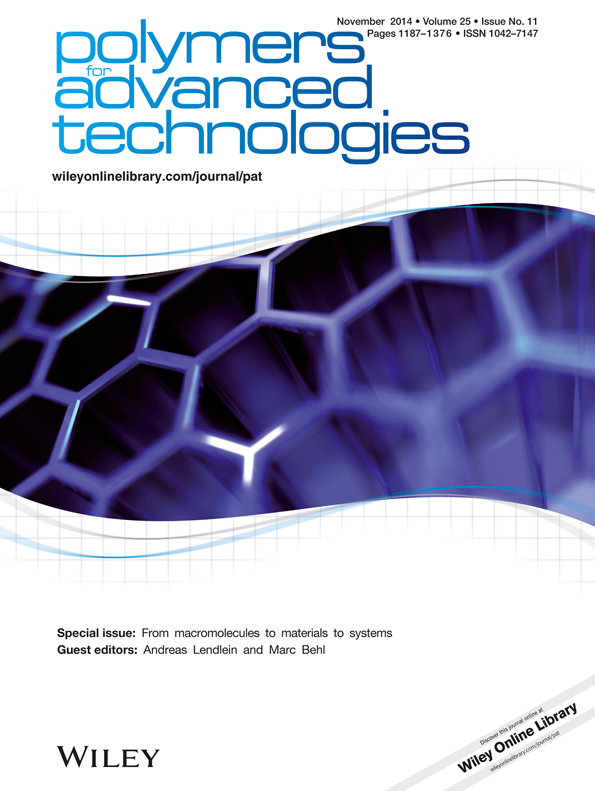PET wastes utilization in the synthesis of aliphatic–aromatic polyurethane elastomers†
This article is published in Journal of Polymers for Advanced Technologies as a special issue on 12th PAT Conference in Berlin, 2013, edited by Prof. Andreas Lendlein and Prof. Marc Behl, Institute of Biomaterial Science, Helmholtz-Zentrum Geesthacht GmbH, Centre for Materials and Coastal Research, Kantstr. 55, 14513 Teltow, Germany.
Abstract
The presented work relates to the synthesis of polyurethane elastomers based on aliphatic–aromatic ester-carbonate oligomerols obtained from poly(ethylene terephthalate) (PET) wastes and dimethyl carbonate as a source of carbonate units. A new method of transformation of PET waste into oligo(alkylene terephthalate)s in the alcoholysis process carried out with the use of azeotropic distillation was described and discussed. The obtained polyurethanes (PURs) exhibited excellent mechanical strength—75% higher tensile strength in comparison to that of polyurethanes based on aliphatic oligocarbonate diols, while maintaining similar elongation at break. It was confirmed that PURs maintain their elastomeric properties up to 42% concentration of aromatic units in the ester-carbonate oligomerol when the mixture of terephthalate and isophthalate was used for the oligomerol synthesis. The new PURs also exhibited better thermal stability than those based on aliphatic carbonate oligomerols. Copyright © 2014 John Wiley & Sons, Ltd.




